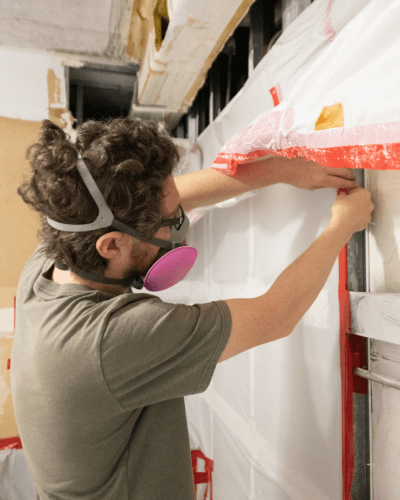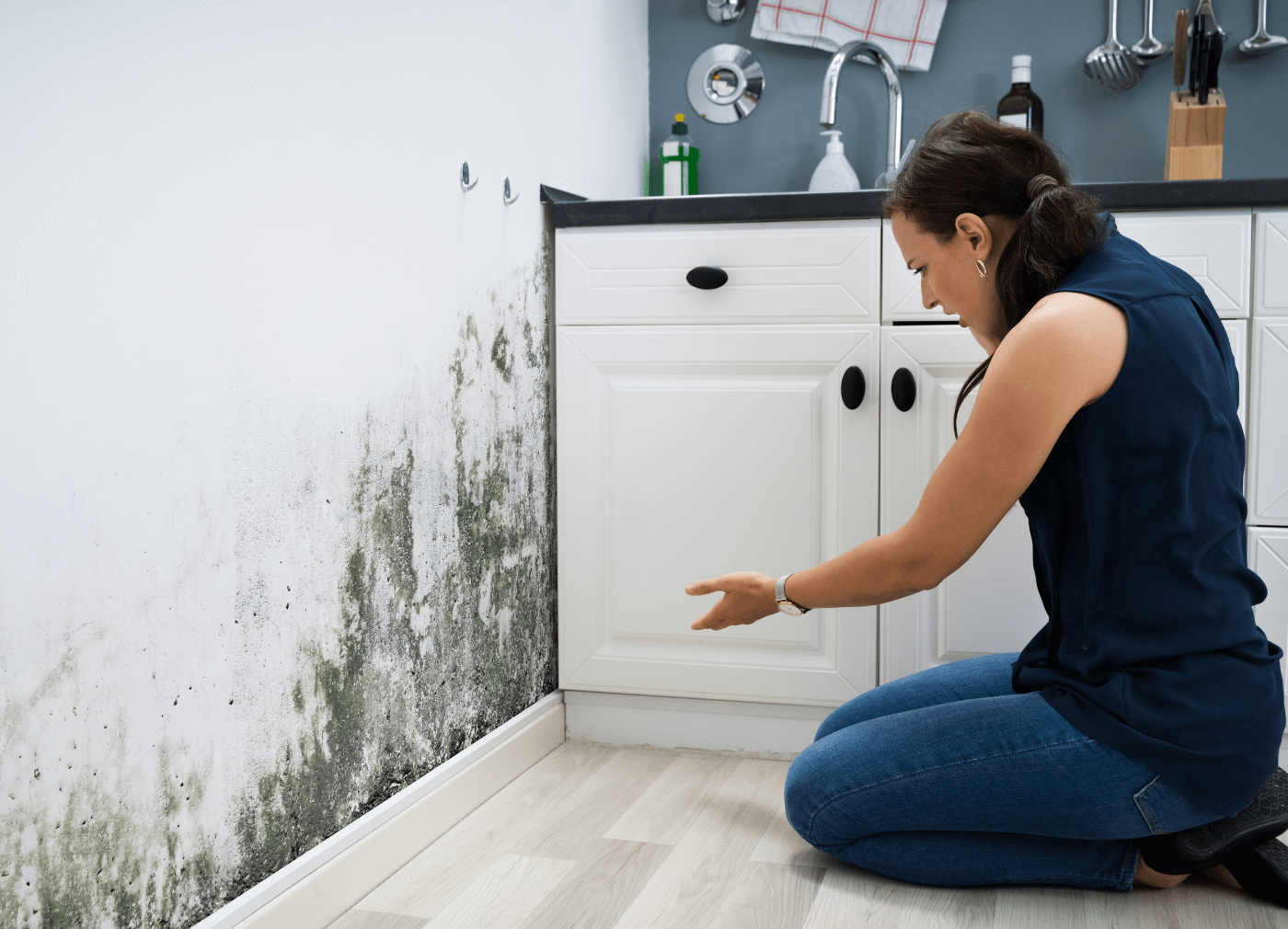If you are like most homeowners, the moment you see mold, you get worried. That’s understandable because mold smells bad, looks bad, and is bad for you and your house. Worse still, it will spread until it causes significant damage.
If you detect mold early, you might be able to remove it yourself, though that requires persistence and purchasing specialty products.
However, the reality is that if mold spreads, you need professional help because this fungus is challenging to deal with. You can’t even see most of it, and sometimes you even need to remove the affected drywall and wood, if the mold gets too bad. Even after cleaning, you won’t know if it will return, whereas professionals ensure it doesn’t spread and doesn’t come back.
But what does the mold removal process look like?

Most homeowners are not aware of this, so they feel anxious when a mold removal professional visits, carries out tests and explains what the removal will entail. This can lead to either overcharging by unscrupulous professionals or unnecessary distrust of legitimate ones.
In this guide, we will explain the general process of mold removal followed by professionals, so that you can ask the right questions, and can make sure you are getting the right quality of service. Remember that the exact process depends on several factors, such as:
- Severity of the Mold Infestation: The extent of mold growth will influence the method and duration of remediation.
- Type of Mold Present: Some mold types like black mold require more intensive removal techniques.
- Location of Mold: Mold in hard-to-reach areas like attics or behind walls may require more invasive procedures.
Let’s understand the mold removal process that professionals follow.
1. Initial Assessment and Testing

The first step in the mold remediation process is an initial assessment and testing to determine the severity of the problem. This assessment also helps the mold remediation team prepare a project estimate for you. Sometimes the remediation work can be carried out within a single day, but depending on the severity of the mold, it can take several days or even a couple of weeks.
An important decision at this point is whether it is safe for you to stay in the property while remediation is carried out. Sometimes, remediation requires the use of strong chemicals. The team will always use personal protective equipment like Tyvek suits and HEPA masks to keep themselves safe from these chemicals. However, since this PPE cannot be provided to you, there may be situations where it is deemed necessary for residents to vacate the property during the remediation process.
Another critical task during this phase is containment. The remediation team will use 6-mil plastic and sealed zipper doors to create barriers that prevent mold spores from spreading to other parts of the property. They will also install dehumidifiers to remove excess moisture from the space. Once these preliminary steps are completed, they can focus on the next phase, which involves removing the mold and ensuring that it is safe for them to work in the space.
2. Mold Removal and Cleaning
In this phase, the remediation team will decide whether they can clean the affected areas or if they need to demolish them. In most cases, it is possible to clean the area if the infestation is not too severe. If cleaning is possible, the following activities will take place:

- The remediation team will use a HEPA vacuum to remove mold spores and particulates from concrete and wall studs. Special attention is given to thoroughly cleaning these surfaces. They will also use vacuum cleaners, chemical washes, and wire brushes to remove mold from these areas.
- After cleaning, surfaces need to be sterilized using special chemical treatments. For areas that are hard to reach, such as attics and under stairs, the team will use a fogger with liquid enzyme treatment to eliminate the mold. Common mold-killing solutions include Concrobium and MR1.
In cases where the mold is very severe, cleaning may not be possible. When this happens, restricted demolition is carried out, particularly on drywall. The more severe the mold, the more likely it is that part of the affected area will have to be demolished. If demolition is required, the removed materials are carefully disposed of in a manner that complies with environmental regulations applicable in Singapore.
Once cleaning or demolition has been completed, the entire area is fogged with an antimicrobial solution to neutralize any airborne spores. If there are air conditioning ducts in the area, they are also cleaned to remove any mold spores. After this, air scrubbers are used, and they are left running for about two days to ensure the air is thoroughly cleaned.
3. Post-Remediation Verification

Just because you cannot see the mold doesn’t mean it has been completely removed. Therefore, it is essential to insist that the mold remediation company provides proper testing-based reports. Professionals have the equipment to test for mold that you cannot see, and these tests are the basis for signing off the project. For commercial spaces, you might even need to obtain a clearance certificate as proof that your workplace is safe and meets regulatory standards.
Conclusion
The mold remediation process requires the expert application of several specialized products and techniques. If you are struggling with a recurring mold problem, it is better to get it done right the first time rather than relying on unsafe and ineffective do-it-yourself methods. Get in touch with a mold removal expert today so you can explain your situation and get the right advice on what your next steps should be.




